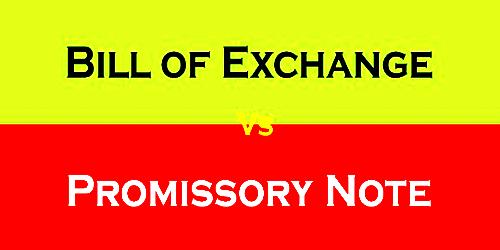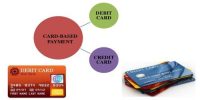A promissory note is a financial instrument that contains a written promise by one party to pay another party a definite sum of money either on demand or at a specified future date. A bill of exchange is an order to pay. A promissory note is a promise to pay. The fundamental difference between Bill of Exchange and Promissory Note is that the former carries an order to pay money while the latter contains a promise to pay money.
We can distinguish or a difference between the bill of exchange and promissory note by the points:
(1) Number of Parties:
- Bill of exchange: There are three parties in the bill of exchange.
- Promissory note: There are two parties in the promissory note.
(2) Number Written By:
- Bill of exchange: It is written by the creditor.
- Promissory note: It is written by the debtor.
(3) Order and Promise:
- Bill of exchange: In a bill of exchange it is an order.
- Promissory note: In a pro-note, it is a promise to make the payment.
(4) Acceptance of exchange:
- Bill of exchange: It must be accepted by the drawee before.
- Promissory note: It requires no acceptance.
(5) Dishonor Notice:
- Bill of exchange: In this case, notice of dishonor must be given by the holder to the concerned parties.
- Promissory note: In case of promissory note there is no need to serve the notice to the maker.
(6) Protest:
- Bill of exchange: A foreign bill must be protested in case of dishonor
- Promissory note: Protect is not needed in case of pro-note.
(7) In Sets:
- Bill of exchange: A foreign bill can be drawn in sets.
- Promissory note: A pro-note cannot be drawn in sets.
(8) Payable to Bearers:
- Bill of exchange: A bill can be drawn if it is not drawn payable to bearer on demand,
- Promissory note: A pro-note cannot be drawn payable to the bearer.
(9) Drawer and Payee:
- Bill of exchange: In this case drawer or payee may be the same person.
- Promissory note: In case of pro-note the drawer cannot become the payee.
(10) Drawer’s Position:
- Bill of exchange: In this case, the drawer of accepted bill stands in immediate relation with the acceptor and not the payee.
- Promissory note: The drawer of the pro-note stands immediate relations with the payee.
(11) Conditional:
- Bill of exchange: The acceptance of the bill may be conditional with the holder’s consent.
- Promissory note: A pro-note cannot be made conditional.
(12) Presentment:
- Bill of exchange: In this case provision relating to presentment for acceptance is applicable.
- Promissory note: Such provision is not applicable in case of promissory note.













